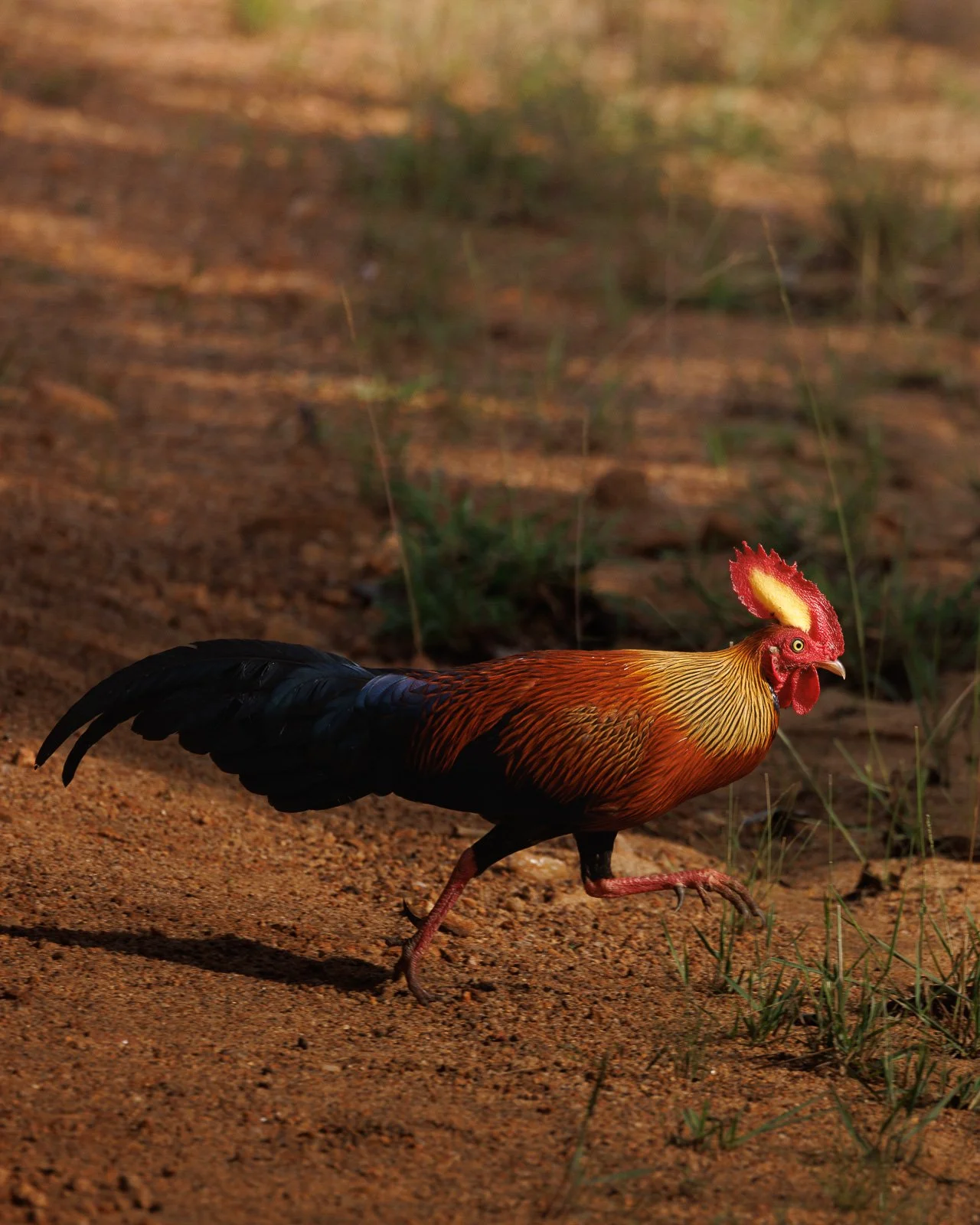
Sri lanka
Sri Lanka is an island nation located in the Indian Ocean, just southeast of the Indian subcontinent. Despite its relatively small size, its position in a tropical zone and its varied topography—from coastal plains to central highlands—make it a hotspot of ecological richness.
Sri Lanka is one of the world's top biodiversity hotspots, especially remarkable for its high rate of endemism. The island is home to thousands of species of plants, mammals, amphibians, reptiles, and birds—many of which are found nowhere else. Key ecosystems include tropical rainforests, dry monsoon forests, wet zone cloud forests, mangroves, and coral reefs. The Sinharaja Forest Reserve, a UNESCO World Heritage Site, is one of the last viable remnants of primary tropical rainforest on the island.
This biodiversity is protected through a network of national parks and sanctuaries, such as Yala, Udawalawe, and Horton Plains, which support species like the Sri Lankan leopard, Asian elephant, and many endemic amphibians. Thanks to its unique geographic position and ecological variety, Sri Lanka holds global importance for biodiversity conservation and endemic species protection.
A majestic Sri Lankan elephant grazes peacefully amid the sun-dappled grasslands. [Kumana, 2024]
A sleek Sri Lankan leopard emerges silently from the forest’s shadow, eyes gleaming with quiet intent. [Wilpattu National Park, 2024]
A sambar deer grazes quietly in the grass. [Horton Plains, 2024]
Painted stork nestling on the canopy of a tree in the middle of a lake. [Wilpattu National Park, 2024]
Majestic Spotted deer showing proudly its wonderful horns [Kumana National Park, 2024]
A Sri Lankan mongoose sits still in the grass, alert and watchful. [Kumana National Park, 2024]
A Sri Lankan jackal walks calmly through the grass, eyes focused and alert. [Kumana National Park, 2024]
A water buffalo rests in a wetland, a white egret perched calmly on its back. [Kumana National Park, 2024]
A Sri Lankan barking deer stands alert in the forest undergrowth. [Wilpattu National Park, 2024]
A Sri Lankan junglefowl strides across the sunlit forest floor. This animal is the symbol of Sri Lanka. [Wilpattu National Park, 2024]
A Sri Lankan elephant gazes calmly, its features marked by wisdom and age. [Sigiriya, 2024]
Elegant Sri Lankan Leopard crossing the dirty road. [Wilpattu National Park, 2024]

![A majestic Sri Lankan elephant grazes peacefully amid the sun-dappled grasslands.
[Kumana, 2024]](https://images.squarespace-cdn.com/content/v1/63e5ef31f74b2e1206db8320/be20bd16-e060-41ef-969f-9996e759e219/_85A0158.jpg)
![A sleek Sri Lankan leopard emerges silently from the forest’s shadow, eyes gleaming with quiet intent.
[Wilpattu National Park, 2024]](https://images.squarespace-cdn.com/content/v1/63e5ef31f74b2e1206db8320/ddc9f8ab-3512-4d79-b423-4fea9c2e7424/_85A0695-Enhanced-NR.jpg)
![A sambar deer grazes quietly in the grass.
[Horton Plains, 2024]](https://images.squarespace-cdn.com/content/v1/63e5ef31f74b2e1206db8320/b131c25c-bba3-4df5-b2f3-fa985a8ae6ce/_85A0643.jpg)
![Painted stork nestling on the canopy of a tree in the middle of a lake.
[Wilpattu National Park, 2024]](https://images.squarespace-cdn.com/content/v1/63e5ef31f74b2e1206db8320/4ec02f8f-c80f-4d24-81ac-ee665acb2ac7/_85A0688.jpg)
![Majestic Spotted deer showing proudly its wonderful horns
[Kumana National Park, 2024]](https://images.squarespace-cdn.com/content/v1/63e5ef31f74b2e1206db8320/9aa45ca7-f5f9-470d-ac32-91b35e717bed/_85A0490.jpg)
![A Sri Lankan mongoose sits still in the grass, alert and watchful.
[Kumana National Park, 2024]](https://images.squarespace-cdn.com/content/v1/63e5ef31f74b2e1206db8320/41fe0d6b-77e7-47f8-831c-526b5e3e476c/_85A0195.jpg)
![A Sri Lankan jackal walks calmly through the grass, eyes focused and alert.
[Kumana National Park, 2024]](https://images.squarespace-cdn.com/content/v1/63e5ef31f74b2e1206db8320/7ce7193d-935b-4115-8350-8ec0181b98a3/_85A0214.jpg)
![A water buffalo rests in a wetland, a white egret perched calmly on its back.
[Kumana National Park, 2024]](https://images.squarespace-cdn.com/content/v1/63e5ef31f74b2e1206db8320/dc7ab063-8dc8-487d-87ce-52fbc30d0f95/_85A0498.jpg)
![A Sri Lankan barking deer stands alert in the forest undergrowth.
[Wilpattu National Park, 2024]](https://images.squarespace-cdn.com/content/v1/63e5ef31f74b2e1206db8320/559f07fa-25af-4b68-b72e-8dc1dd04e648/_85A0660.jpg)
![A Sri Lankan junglefowl strides across the sunlit forest floor. This animal is the symbol of Sri Lanka.
[Wilpattu National Park, 2024]](https://images.squarespace-cdn.com/content/v1/63e5ef31f74b2e1206db8320/fa217cb8-1b9a-4545-a529-3c5a65639bc2/_85A0798.jpg)
![A Sri Lankan elephant gazes calmly, its features marked by wisdom and age.
[Sigiriya, 2024]](https://images.squarespace-cdn.com/content/v1/63e5ef31f74b2e1206db8320/2b9dd624-2af0-4f2a-babf-0c767bd3a160/_85A9475.jpg)
![Elegant Sri Lankan Leopard crossing the dirty road.
[Wilpattu National Park, 2024]](https://images.squarespace-cdn.com/content/v1/63e5ef31f74b2e1206db8320/0509006f-6925-4271-9559-3b66ef074c5b/_85A0736.jpg)